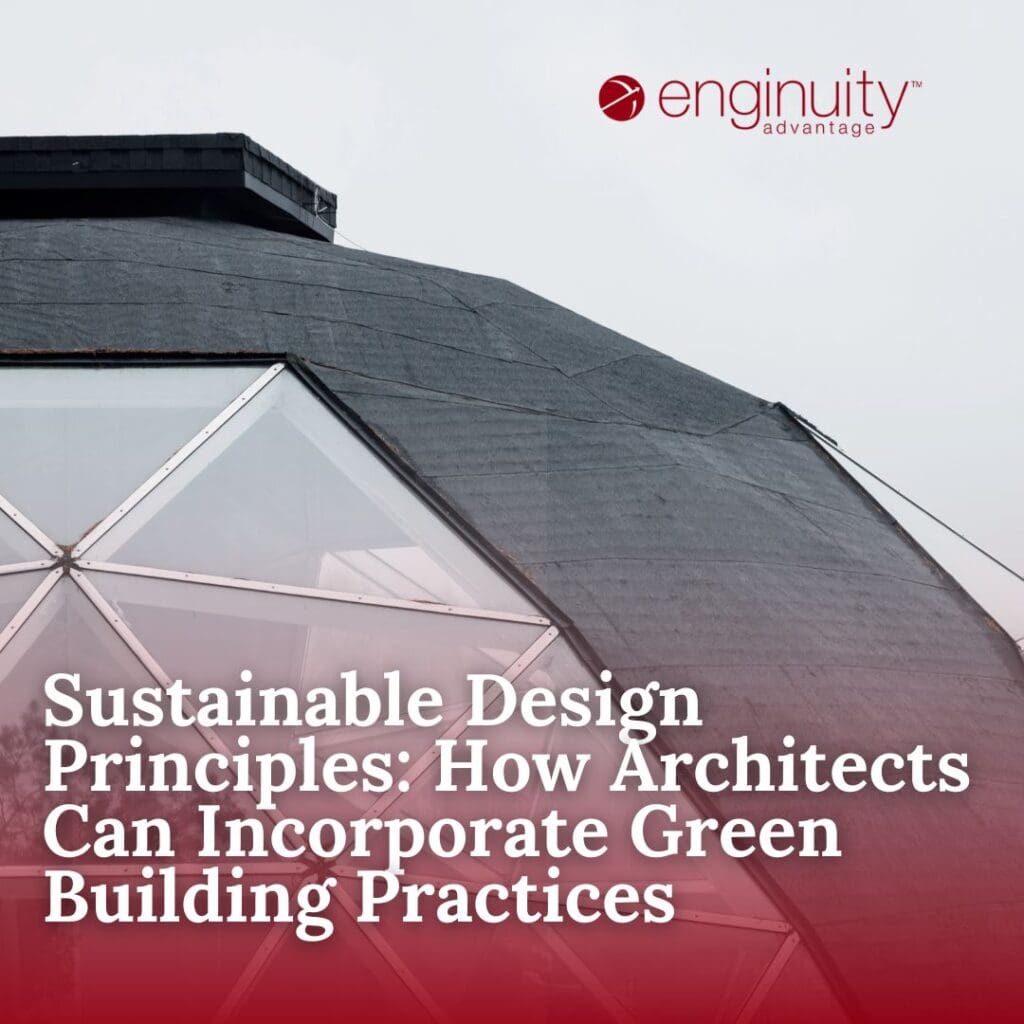Creating Sustainable Buildings: Architectural Principles and Green Practices

In an era of increasing environmental consciousness, the fields of architecture and sustainable design have converged to create a more ecologically responsible approach to building. Sustainable design principles are at the forefront of architectural innovation, reshaping the way buildings are conceived, constructed, and operated. This article delves into the intersection of sustainable design and architecture, shedding light on how architects can effectively incorporate green building practices into their projects.
The U.S. General Services Administration (GSA) is at the forefront of promoting sustainable design in its construction and modernization projects. Their approach to sustainable design aims to reduce the negative impacts on the environment and enhance the health and comfort of building occupants. This not only improves building performance but also aligns with the broader objectives of sustainability, such as reducing the consumption of non-renewable resources and minimizing waste.
What is Sustainable Architecture?
Sustainable architecture is a design philosophy that focuses on creating aesthetically pleasing structures that are also environmentally responsible and resource-efficient. The aim is to reduce environmental impacts and enhance the quality of life for occupants. The core principles of sustainable architecture include energy efficiency, resource conservation, the use of eco-friendly materials, promoting occupant health and well-being, and ensuring adaptability and resilience in building designs.
Sustainable architecture offers three main benefits:
- Environmental: Reduces consumption of non-renewable resources, lowers greenhouse gas emissions, and promotes biodiversity.
- Economic: Provides long-term cost savings, reduces maintenance costs, and increases property values.
- Social: Enhances indoor environments, fosters a sense of community, and offers educational opportunities.
Understanding Sustainable Design Principles
At its core, sustainable design aims to reduce the negative environmental impacts of buildings while enhancing the well-being of occupants. This concept encompasses various principles:
Energy Efficiency is Key
Before you even put pencil to paper, consider the energy footprint of your building. How can you optimize natural light to reduce reliance on artificial lighting? Have you thought about integrating renewable energy sources, like solar panels or even wind turbines? And it’s not just about reducing energy but using it efficiently. The GSA is committed to reducing fossil-fuel-generated energy consumption. By 2020, the goal is to achieve an 80% reduction, with a 100% reduction target set for 2030. Think insulation, think passive solar design, and think long-term energy savings!
Resource Conservation
Sustainable architects prioritize the responsible use of materials, opting for eco-friendly, recycled, or locally sourced options. They minimize waste and maximize the lifespan of building components.
Environmental Responsibility
Sustainable buildings are often designed to harmonize with their surroundings, preserving ecosystems and minimizing disruption to the environment.
Indoor Air Quality
Architects consider the health of building occupants by selecting materials that emit fewer pollutants and designing for proper ventilation.
Architects as Catalysts for Change
Architects play a pivotal role in advancing sustainable design principles. Here’s how they can lead the charge:
Education and Advocacy
Architects can educate clients and stakeholders about the benefits of sustainable design. By advocating for eco-friendly choices, they can influence decisions that lead to greener buildings.
Innovative Design
Architects are constantly exploring innovative design solutions. They can incorporate green technologies like solar panels, rainwater harvesting, and passive heating and cooling systems into their projects.
Certifications and Standards
Many architects pursue certifications like LEED (Leadership in Energy and Environmental Design) to demonstrate their commitment to sustainable practices. These certifications can guide architects in making environmentally conscious decisions.
The Future is Now: Long-Term Thinking
Sustainable design is all about the long game. It’s about creating structures that are durable, timeless, and adaptable. Always be forward-thinking, anticipating the needs of tomorrow while addressing the challenges of today.
Building Community and Connectivity
A sustainable building promotes community. This could mean designing communal spaces, ensuring easy access to public transportation, or even integrating mixed-use spaces to reduce daily commutes.
Continuous Learning and Adaptation
The field of sustainable architecture is always evolving. Stay updated with the latest trends, attend workshops, and never stop learning. The more you know, the more you can innovate.
Advocacy and Awareness
As architects, we’re also advocates. Use your platform to raise awareness about the importance of sustainable design, not just among peers but also clients and the community.
Power to Shape a Sustainable Future
Sustainable design is more than just a trend; it’s a responsibility. As architects, we have the power to shape a sustainable future, one building at a time. So, gear up, stay inspired, and let’s make a difference!
Keen on diving deeper into sustainable architecture? Or maybe you’re scouting for that perfect eco-friendly job opportunity? Explore our other posts crafted just for you. Let’s build a greener tomorrow, one blueprint at a time! ?
FAQs:
What’s the big deal about sustainable design?
It’s about creating spaces that are environmentally friendly, cost-effective in the long run, and promote healthier living.
Is sustainable design expensive?
While initial costs might be higher, the long-term savings in energy and water bills, coupled with the benefits to the environment, make it a worthy investment.
How can I stay updated with the latest in green architecture?
Join forums, attend workshops, collaborate with experts, and always be on the lookout for innovative solutions.
Are clients really interested in sustainable designs?
Absolutely! With rising awareness about environmental issues, many clients are keen on green buildings.
Can I retrofit an old building to make it sustainable?
Yes, many old structures can be retrofitted with green technologies to make them more energy-efficient and sustainable.
Unlock Dream Careers & Elite Talent: Just One Click Away!


